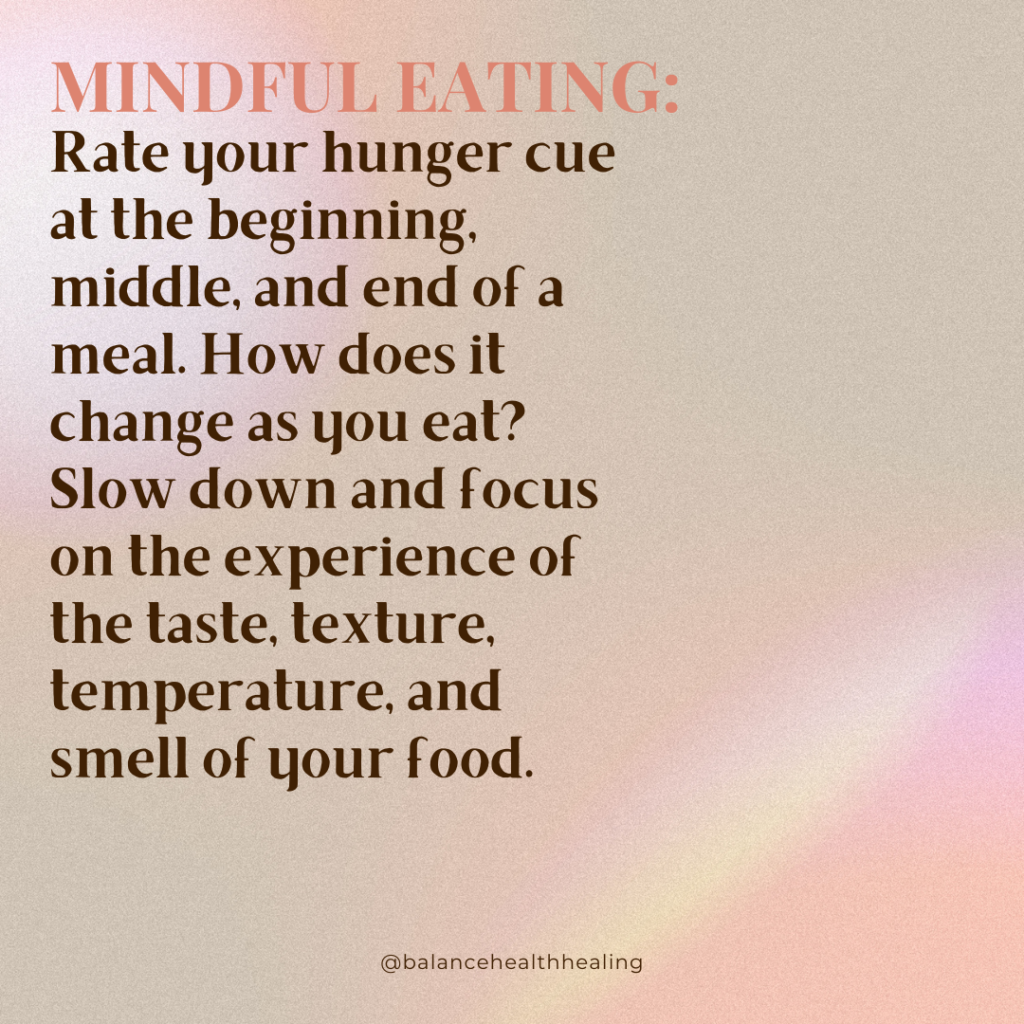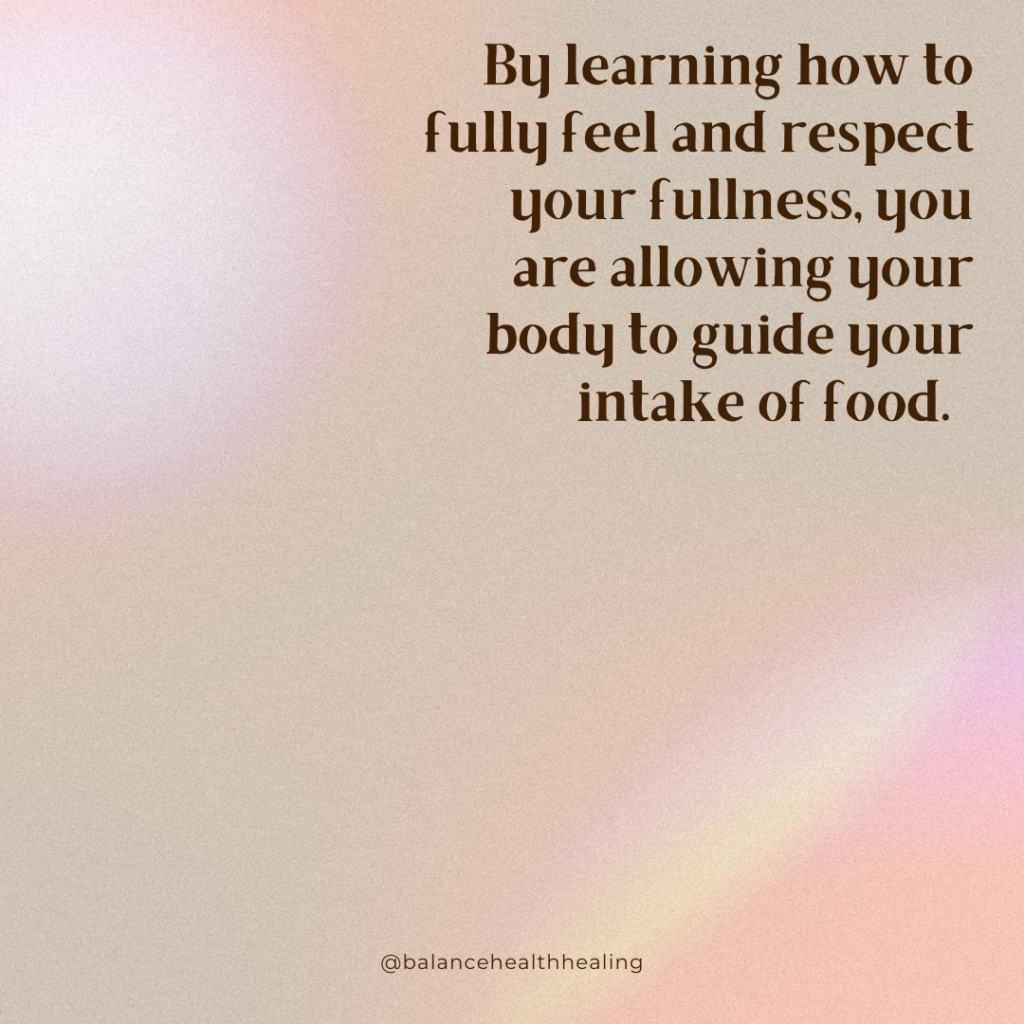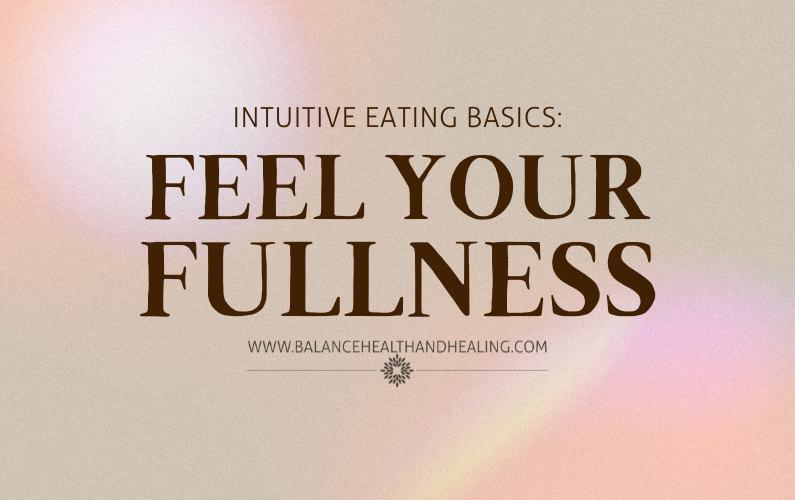As we continue our exploration of the basic principles of Intuitive Eating, we are going to focus next on the concept of learning to “Feel Your Fullness”.
In “Intuitive Eating” by Evelyn Tribole and Elyse Resch, they instruct:
 “Listen for the body signals that tell you that you are no longer hungry. Observe the signs that show that you’re comfortably full. Pause in the middle of eating and ask yourself how the food tastes, and what your current hunger level is.”
“Listen for the body signals that tell you that you are no longer hungry. Observe the signs that show that you’re comfortably full. Pause in the middle of eating and ask yourself how the food tastes, and what your current hunger level is.”
Take a second and evaluate – how comfortable are you with leaving food on your plate?
Chances are, if you have a history of dieting, you are likely cleaning that plate without even thinking about it. There is an interesting correlation between diet mentality and the “clean plate club”. When you have been following a restrictive diet and it comes time to eat your “allowed” food, people typically consume everything permitted. Even if it’s a garbage-tasting weird-as-all-get-out diet substitute for a beloved treat – if it’s “allowed”, it gets eaten. A mentality of “eat while you can!” develops.
This type of relationship with food is out of touch with your body’s natural inner hunger and fullness cues. When you engage in this type of extremely common and culturally promoted behavior, you are training yourself to deny your desire to eat and also to ignore your sense of satiety.
Ignoring your fullness cue can also show up in another way- by primarily focusing on external cues for information about how much you should eat. This may look like needing to eat the entire bag of chips or the entire burrito rather than letting your internal cues guide your eating. You may be numb to your body and your relationship with food has suffered because of it, and so you eat mindlessly until the package or serving is completed, and decide you are “done” – without ever checking in on what your body is trying to tell you.
By learning how to fully feel and respect your fullness, you are allowing your body to guide your intake of food. 
How do you recognize your fullness or satiety cues? While this is something that can be very individual, you can learn to recognize the unique way your body is giving you information about how much to eat. It can be helpful to think back to your hunger cues. Do you primarily feel hunger as a stomach sensation? Do you notice feeling irritable, distractible, or thinking more about food when you are hungry? Often your fullness cues will mirror your hunger cues. You can feel a lack of the stomach sensation of hunger, or less irritable and distractible, or less interested in thinking about food when you are full.
In order to really understand this individual cue, take some time to practice mindful eating. Rate your hunger cue at the beginning, middle, and end of a meal. How does it change as you eat? Slow down and focus on the experience of the taste, texture, temperature, and smell of your food.
This approach to eating is like taking your body off of autopilot – either from dieting or feeling like you “have” to eat your serving size – and putting you fully in the driver’s seat. You take over the operation and navigation of your relationship with food and use your hunger and fullness as a guide to what happens. By empowering yourself in this way, you are getting one step closer to intuitive eating!

